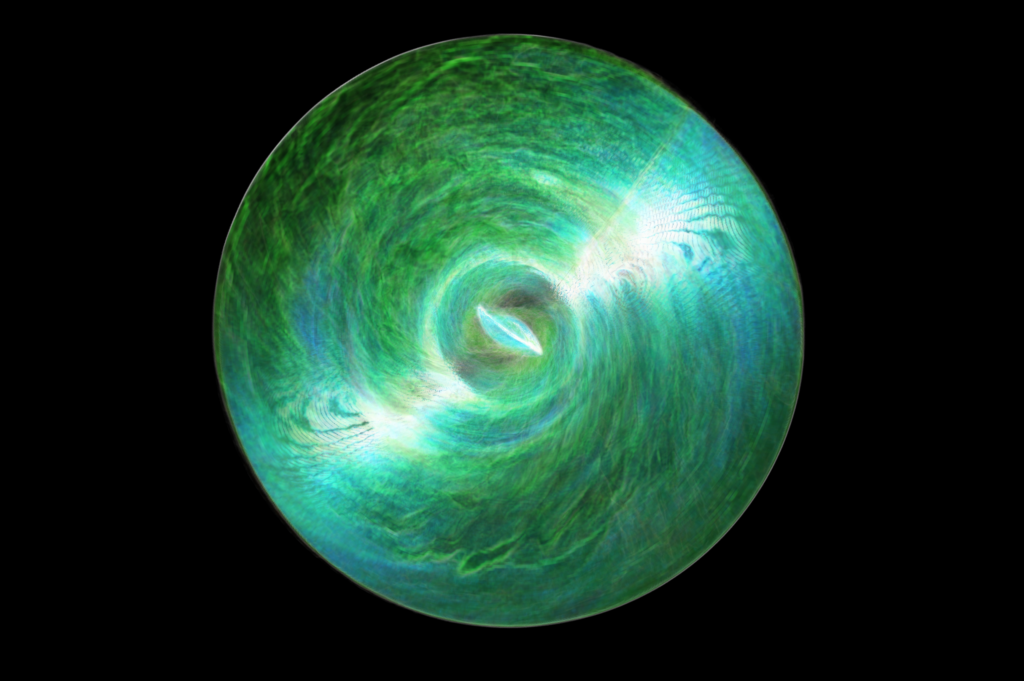Simulated image of an accretion disk, the violent whirlpool of gas that encircles a supermassive black hole, broken apart into inner and outer rings.
According to new high-resolution 3D simulations, spinning black holes twist up the surrounding space-time, ultimately ripping apart the violent whirlpool of gas (or accretion disk) that encircles and feeds them. This results in the disk tearing into inner and outer subdisks. Black holes first devour the inner ring. Then, debris from the outer subdisk spills inward to refill the gap left behind by the wholly consumed inner ring, and the eating process repeats.
One cycle of the endlessly repeating eat-refill-eat process takes mere months — a shockingly fast timescale compared to the hundreds of years that researchers previously proposed.
This new finding could help explain the dramatic behavior of some of the brightest objects in the night sky, including quasars, which abruptly flare up and then vanish without explanation.
The study was published on September 20, 2023 in The Astrophysical Journal.
Read the full CIERA news story here.

Credit: A. Tchekhovskoy/Nick Kaaz/Northwestern University
- Science

